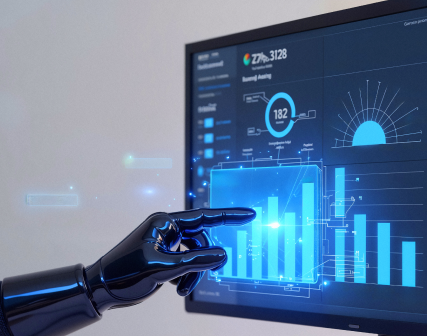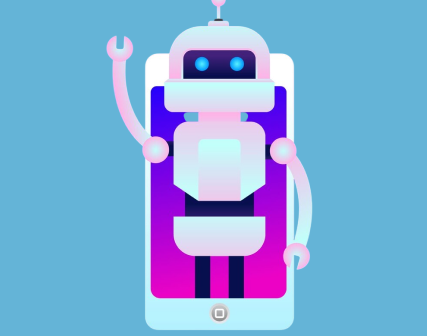What is a good conversion rate Shopify?
What is a good conversion rate for Shopify store? What factors influence the average conversion rate and how to lead your niche? Denys Studennikov, COO and Head of the UX/UI Department at Turum-burum, a specialist with 9 years of experience, shared his expertise and advice.
Good conversion rate Shopify: myth or reality?
Shopify is a leading e-commerce platform that allows users to create and manage online stores thanks to ready-to-use templates. Founded in 2006, Shopify is known for its user-friendliness, reliability, and strong customer support.
However, some people are still sceptical about Shopify e-commerce's efficiency and say that only customized UX/UI design from scratch can lead to high conversion. The reasons are quite obvious: limited interface flexibility and customization, lack of space for creativity, and product scalability.
But what do facts say about it? You may be surprised, but many world-known brands are Shopify-based: The New York Times, Kylie Cosmetics, Paramount Shop, and many others.
What’s more, the most successful Shopify store, Allbirds, earned $254+ million in annual revenue as of 2024.
Consequently, if you use Shopify's potential to your benefit, you can create a
good conversion rate Shopify store and a competitive e-commerce without great time and money investments. Let’s find out how to cope with this task below.
Good conversion rate Shopify: asses your e-commerce
The average Shopify conversion rate in 2024 is around 1.4%. Note that this number is just a midpoint and e-commerce CR depends on your niche, target audience, and level of interface optimization to the customer needs.
In fact, the best Shopify stores can boast a conversion rate of 3.3%— 20% of all Shopify-based products and even 5.2% — just 10% of websites. At the same time, nearly 20% of Shopify stores have a poor performance of 0.5% and below.
CR potential due to the chosen industry
The niche of your business plays a key role in estimating the average conversion rate of a website. The size of the store, product range, the length of the transaction cycle and other factors make a great different. Therefore, when comparing figures, it is worth looking at data from competitors in a particular e-commerce industry.

- Retail market
The retail industry presents a variety of products and goods: clothes, footwear, jewellery, and many others. If you are running this type of e-commerce, an average conversion of 1.9% is a good conversion rate for Shopify store of this kind.
Seasonality plays an important role in the success of these online shops. Before the start of the season, people are more likely to make purchases, which increases the average conversion rate.
And then the average conversion rate drops in every second month of the season because people have either bought everything in advance or bought the necessary goods in the first month of the season.
- Home decoration
This marker has considerably evolved after the COVID-19 pandemic. Previously, people were hesitant to purchase furniture and other home products online due to their price. In 2024, the home decoration industry showed an average conversion rate of 1.9%.
At the same time, we noticed that such stores have a high cart abandonment rate of 88.64%. So if you are running this type of business, take this fact into account to boost your revenue.
- Electronics and home appliances
When it comes to a large online appliance and electronics store with a clearly defined positioning, 3-4% is considered a good conversion rate for Shopify product. However, if it is a small online shop with a diverse range of products, the average conversion rate will fluctuate within 1-2%.
- Food and beverages
People can survive without a pair of new shoes or the latest mobile phone model, but food… This type of industry will always be in demand (especially basic foods). In 2024, the Food and beverages niche reached an average CR of almost 5% with an average card abandonment rate of 72%. Interestingly, mobile and desktop users have almost the same level of engagement.

- Personal care
Although the average ecommerce conversion rate is generally low across most sectors, personal care products stand out with an impressive 6.8% conversion rate and 82% of the average card abandonment rate.
What’s more, the beauty industry is expected to cross $716 billion by 2025 so it has the potential to reach even higher CR scores.
How to get a good conversion rate for Shopify?
If your e-commerce has a conversion rate of 3%, it means that 3 website users out of 100 purchase from your e-commerce, meaning that 97 persons just close the page. As a business owner, you are interested in winning the hearts of the rest users.
Let’s talk about the most effective ways to get a good conversion rate Shopify store.
- Add customer reviews
97% of users read product reviews before placing an order, and every second user trusts reviews as much as their friends or loved ones. For that reason, product reviews are essential for optimizing business conversion rates.
So, you should be creative to encourage the customers to share their feedback about the purchased goods:
- Send email notifications;
- Offer discounts or bonuses for the reviews;
- Explain why it is important for your brand;
- Make the feedback form simple and fast to fill in.
- Optimize search accuracy
In your product descriptions, try to use appropriate keywords—the formulations your customers may use while searching for a particular product. This is especially important for technical terms in the beauty, healthcare, and electronic industries, where there may be some specific terms. It is also a good option to consider search inquiries that react to several languages and both capital and small letters to get good Shopify conversion rate.
- Notify users about the availability of the relevant products
For example, if the product is currently out of stock, provide users with the option to “notify me when the product is available.” It is important to ask the user to specify the desired size, color, or other product characteristics. Otherwise, notifications about an out-of-stock product may irritate potential customers.

- Add high-quality photos
According to the statistics of the Baymard Institute research company, 42% of users try to understand the appearance and size of a product based on its photo. Therefore, it is essential to use high-quality photos and devote most of the product card to displaying them. What’s more, the product can be placed in your hand or against the background of another object to convey its actual size.

- Provide personalized experience
87% of users worldwide are more loyal to brands that understand their pains and needs.
For that reason, personalization is the main key to high conversion. Offer users products based on what they have viewed or purchased before by implementing blocks ‘Viewed before’, ‘ Similar products’, ‘New arrivals’, etc. It will create new entry points and increase customer loyalty that will lead to higher conversion.
Good conversion rate for Shopify: drawing the line
There is no exact conversion rate your business must have since many factors may influence it: industry type, season, socio-political circumstances, etc. For that reason, you should systematically analyze the market, compare yourself with competitors in your niche, and take the data obtained as a benchmark. In case you analyze user behavior, constantly check the interface for usability issues and make UX/UI adjustments, your Shopify store will develop and achieve good Shopify conversion rate. And once you get a maximum from the Shopify UX/UI design, you can think about further business scalability and the creation of a customized website design.
FAQ
Question reference
Answer reference
More real-world Turum-burum cases?
Review our vast portfolio of cases in a variety of business fields to make sure of our expertise.
Go to Portfolio


.png)





.png)










